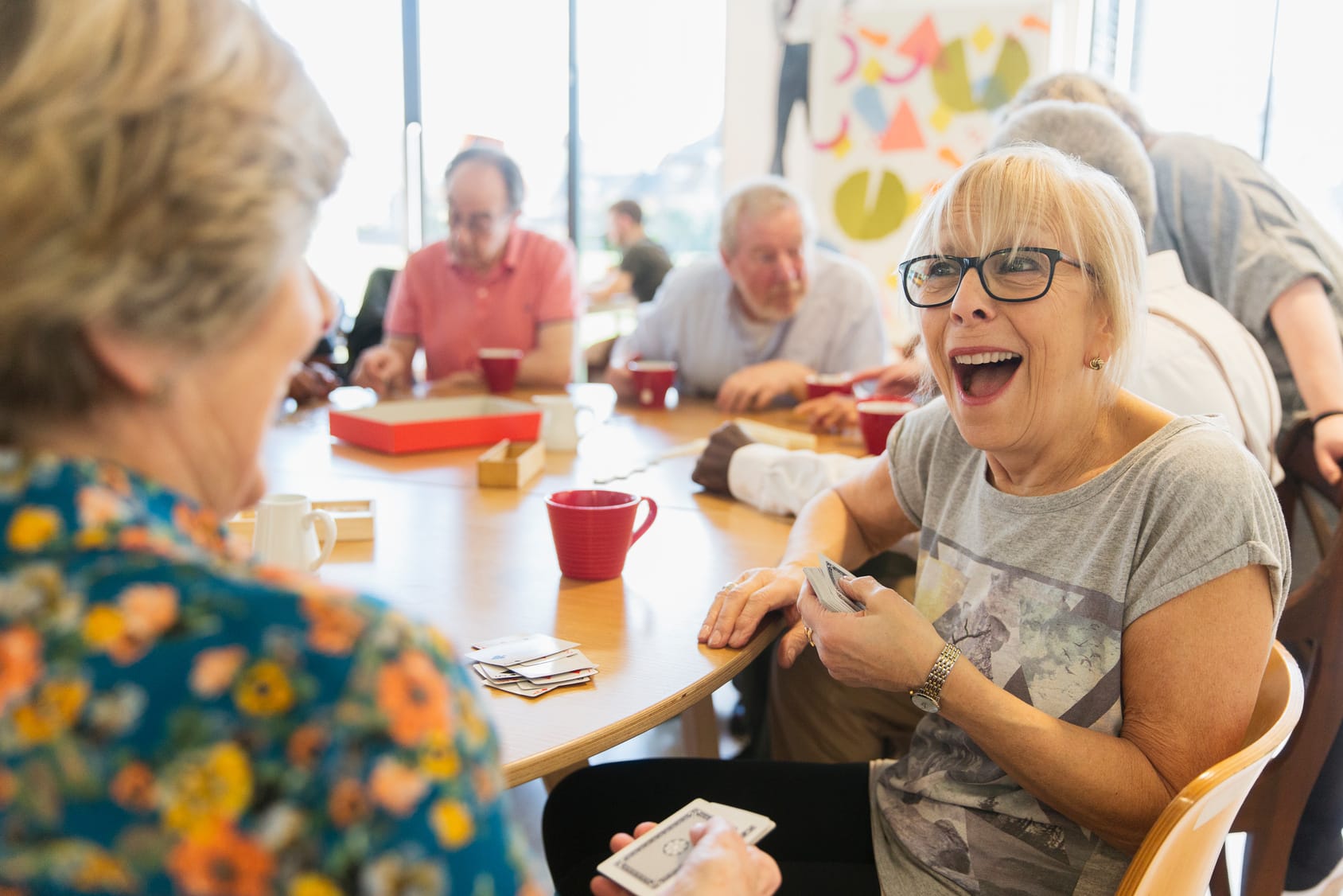Assisted Living Transition: Myths Debunked So You Can Worry Less®

Assisted living is ideal for older adults who want to maintain as much of their independence as possible but need a little extra support and care to do so. If you have decided to move yourself (or a loved one) into an assisted living community, this decision can stir up many different emotions: excitement, curiosity, and, in some cases, nervousness.
It is common to have trepidation about the unknown, but it is important that you feel comfortable and understood when making the move to senior living. After all, this change is about enhancing your health and wellness, not limiting your independence or freedom.
At St. Andrew's, it is our mission to help you Worry Less® as you make this change. Fortunately, our team is here to help you through every step of moving into your new home.
Recognizing the Concerns Surrounding the Assisted Living Transition
Just know that your thoughts and concerns are valid. Take the time to voice these concerns to a family member who is helping you make the move because they can then empathize and provide reassurance.
While everyone may experience their own set of concerns, a few of the common fears about the transition into a senior care community include the following.
MYTH #1: LOSS OF INDEPENDENCE
FALSE.
Many individuals think that they are giving up their independence by moving into an assisted living community, but that is not the case. Your new surroundings will help foster and maintain your independence, not hinder it! With our team members at your new community taking care of the home maintenance tasks, helping with cooking and cleaning, and assisting you with activities of daily living, you can have more free time to pursue interests, build new relationships, and focus on overall well-being.
MYTH #2: BEING FORGOTTEN
FALSE.
This fear is a big one, but just because you are moving does not mean that your relationship with your family will change. Maintain traditions, weekly get-togethers, and whatever else is routine for you and them. For example, if your family usually gathers at your house for dinner, that should not change just because you've moved. Fortunately, many senior living communities, including those in the St. Andrew's network, encourage families and friends to visit, have dinner, or participate in community activities.
MYTH #3: FINANCIAL CONCERNS
FALSE.
Another common fear many seniors have is running short of funds, especially as their level of care needs change and more support is required. Even those who have been putting aside funds sometimes worry that it won't be enough. You may be worried about what will happen if the money runs out—and the implications that could have on your family members.
If you have financial concerns, you should know that this transition could be more beneficial financially than continuing care at home, as the cost of at-home care can be significantly higher than that of residential care. Talk with a team member in the community or hire a financial advisor to discuss all of your options.
Overcoming Fear As You Transition into an Assisted Living Community
Here are some tips for easing the transition period to assisted living, all while reducing anxious feelings.
TIP #1: START THE PACKING PROCESS EARLY
Moving is an emotional process. Going through belongings that have been packed away for a long time can bring back memories and emotions. Additionally, packing can be stressful if it is rushed. Start packing and downsizing long before the move-in date, giving yourself ample time to decide which items to pack, which to donate, and which to toss.
TIP #2: FAMILIARIZE YOURSELF WITH THE NEW COMMUNITY
Do not wait until moving day to visit and interact with the community. Instead, new residents should visit often and even consider having a meal (or two) in the dining room and participate in some community activities and outings. By doing so, you will have the chance to get comfortable in the new space, meet community staff members, and maybe even make a few new friends!
TIP #3: FURNISH WITH FAMILIAR ITEMS
Decorate your new space with familiar items. A favorite chair, family photo, and or sentimental item can go a long way in making a new living space feel like your own home.
Or how about trying a completely new style! As a new chapter in your life, this is the best time to get everything you ever wanted to decorate your new space. Go crazy! Get some design inspiration from home style magazines.
TIP #4: HAVE LOVED ONES OVER
The transition into a senior living community will take time. You need to get acclimated and truly feel at home in a new environment, so ask family members to visit often which can help you settle into a new, exciting lifestyle!
Our Commitment is Enabling Elders and Their Caregivers to Worry Less®
At St. Andrew's Resources for Seniors System, we pride ourselves on being the place where seniors, their families, and their caregivers find answers and peace of mind. St. Andrew's can provide whatever living option you or your aging parent needs, whether it's offering occasional care services that allow a senior to remain self-sufficient, a comfortable independent living community that feels like home, a memory care or skilled nursing community for long-term care, or even short-term Medicare rehabilitation. Let us help you pick the right community.
Our senior living communities help families access the support they need and, most importantly, we help them Worry Less®.







